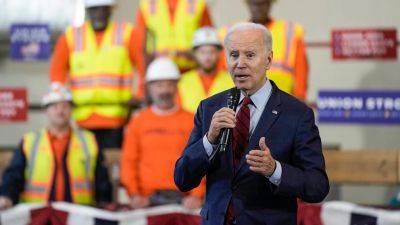Will the auto workers’ strike jeopardise Joe Biden’s manufacturing boom?
manufacturing renaissance. President Joe Biden claims much of the investment is the result of financial incentives resulting from the Chips and Science Act and the Inflation Reduction Act (IRA), two of his signature policies. But state and local giveaways also help.
So does the desire to outcompete China, as well as reshoring after supply-chain chaos during the pandemic. In the case of carmakers like Ford, which decided to build at Stanton before the IRA was passed, the fear is that unless they seize the initiative on electrification, they will lose their dominance of America’s car industry to Tesla, the EV front-runner. Given how attached Americans outside a few coastal cities remain to their gas guzzlers, the surge in EV and battery factories may seem like white elephants in the making.
Yet the companies behind them clearly see a commercial logic. And the factories are already playing a role in national debates. The EV and battery plants are important points of contention in a strike against Detroit’s big three carmakers, Chrysler (part of Stellantis, whose biggest shareholder part-owns The Economist’s parent company), Ford and General Motors (GM).
Both Mr Biden and Donald Trump are due to visit Michigan in coming days, to support the strikes. The United Auto Workers (UAW) is worried that the new factories will be hard to unionise. But the cost of labour is likely to be pivotal in determining whether America’s manufacturers can regain their mojo or not.
Read more on livemint.com





















